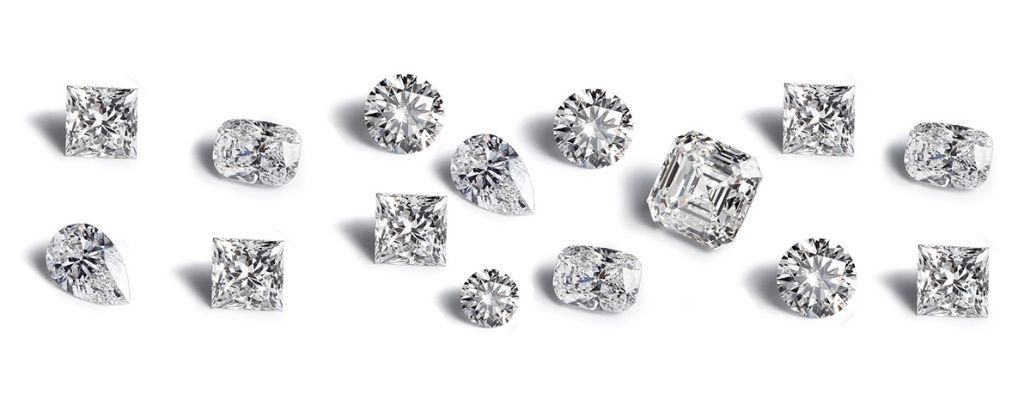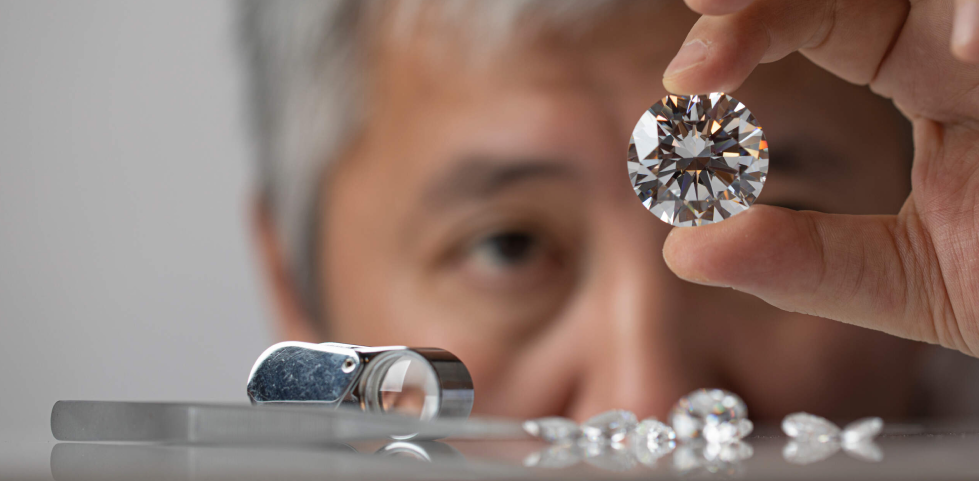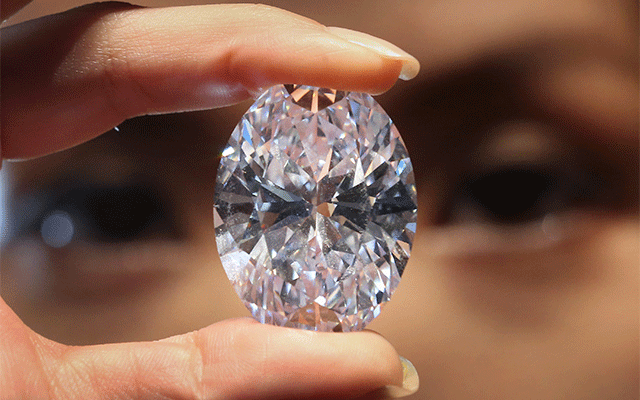Diamonds have captivated the human imagination for centuries with their mesmerizing beauty and allure. Traditionally, these precious gemstones were formed deep within the Earth over millions of years. However, recent advancements in science and technology have unlocked the ability to create diamonds in laboratories, revolutionizing the diamond industry. In this article, we delve into the world of lab-created diamonds, exploring their origins, characteristics, benefits, and impact on the jewelry market.

Understanding Lab-Created Diamonds:
Lab-created diamonds, also known as synthetic or man-made diamonds, are grown in controlled laboratory environments that mimic the natural diamond formation process. They possess the same chemical composition, physical properties, and optical qualities as natural diamonds, making them virtually indistinguishable to the naked eye. These diamonds are created through two primary methods: High Pressure-High Temperature (HPHT) and Chemical Vapor Deposition (CVD).

Origins and Advancements:
The concept of lab-created diamonds dates back to the mid-20th century, with early experiments yielding small, low-quality diamonds. However, over the years, significant advancements in technology have paved the way for the production of high-quality, gem-grade lab-created diamonds. Modern techniques have enabled manufacturers to replicate the natural growth conditions of diamonds with remarkable precision.
Characteristics and Quality:
Lab-created diamonds exhibit the same physical, chemical, and optical properties as their natural counterparts. They possess exceptional hardness, durability, and brilliance, making them an ideal choice for jewelry. These diamonds are graded using the same 4Cs criteria—color, clarity, cut, and carat weight—as natural diamonds, ensuring consistent quality and providing consumers with a reliable benchmark for comparison.
Sustainability and Ethical Considerations:
One of the most significant advantages of lab-created diamonds is their reduced environmental impact compared to traditional diamond mining. Mining natural diamonds often involves substantial land disturbance, energy consumption, and water usage. In contrast, lab-created diamonds require significantly fewer resources and have a minimal carbon footprint. Moreover, they are free from the ethical concerns associated with diamond mining, such as worker exploitation and conflict diamonds.
Affordability and Accessibility:
Lab-created diamonds offer an attractive alternative for budget-conscious consumers who desire the beauty and elegance of diamonds without the exorbitant price tag. Typically, lab-created diamonds are priced at a fraction of the cost of natural diamonds with comparable characteristics. This affordability factor has democratized diamond ownership, making them accessible to a broader range of individuals.
Market Acceptance and Consumer Perception:
The acceptance of lab-created diamonds in the jewelry market has been steadily increasing. More consumers are recognizing the value, beauty, and ethical advantages of lab-grown diamonds. Major jewelry brands and retailers have begun to offer lab-created diamonds alongside their natural diamond offerings, catering to a diverse customer base with varying preferences and budgets.
Future Trends and Innovations:
As technology continues to advance, we can expect further improvements in the quality, size, and color range of lab-created diamonds. Ongoing research and development efforts are focused on enhancing the growth process, expanding the range of available colors, and exploring new diamond applications beyond jewelry. These innovations will likely shape the future of the diamond industry and create new opportunities for designers and consumers alike. The diamond industry will exponentially bloom in the future too.

Addressing Misconceptions:
Despite the numerous benefits and advancements in lab-created diamonds, misconceptions still persist. One common misconception is that lab-created diamonds are “fake” or of lower quality. However, it’s important to clarify that lab-created diamonds are real diamonds with identical chemical and physical properties to natural diamonds. Another misconception is that lab-created diamonds lack rarity. While it is true that lab-created diamonds can be produced in larger quantities, rare and fancy colored lab-created diamonds do exist and are highly sought after.
Consumer Education and Transparency:
In order to fully appreciate and embrace lab-created diamonds, consumer education, and transparency play a crucial role. Jewelers and industry professionals have a responsibility to educate customers about the options available to them, clearly explaining the differences between natural and lab-created diamonds, and empowering consumers to make informed choices based on their preferences and values.
Coexistence with Natural Diamonds:
Lab-created diamonds and natural diamonds can coexist harmoniously within the jewelry industry. Each has its own unique appeal and caters to different consumer needs. The choice between a natural or lab-created diamond ultimately depends on personal preferences, budget, and ethical considerations. The industry can thrive by offering a diverse range of options to accommodate a wide range of consumer demands.
Certification and Standards:
To ensure transparency and consumer confidence, reputable certification bodies play a vital role in evaluating and grading lab-created diamonds. Certification provides assurance of the diamond’s quality and authenticity, enabling consumers to make informed purchasing decisions. The diamond industry should continue to establish and uphold stringent standards for the certification of lab-created diamonds, maintaining trust and credibility.
Embracing Innovation and Collaboration:
The rise of lab-created diamonds presents an opportunity for collaboration and innovation within the diamond industry. Jewelers, manufacturers, and scientists can work together to explore new possibilities, such as incorporating lab-created diamonds into innovative designs, utilizing advanced cutting techniques, and leveraging technological advancements to push the boundaries of diamond craftsmanship.
Long-Term Durability and Investment Potential:
Lab-created diamonds possess the same long-term durability as natural diamonds, making them a viable investment option. With proper care, lab-created diamonds can retain their brilliance and value over time. As consumer awareness and acceptance of lab-created diamonds continue to grow, their investment potential may also increase, presenting an exciting opportunity for collectors and investors alike.
Collaboration with Natural Diamond Industry:
Rather than viewing lab-created diamonds as competitors, the natural diamond industry can explore collaborations and synergies. Joint efforts can focus on sustainability initiatives, research and development, and sharing best practices. This collaboration would not only benefit the industry as a whole but also contribute to the ethical and environmental progress of the diamond sector.
Consumer Perception and Changing Market Dynamics:
The perception of lab-created diamonds has evolved significantly in recent years. As consumers become more informed about the advantages and similarities between lab-created and natural diamonds, their preferences and purchasing decisions are shifting. Jewelers and retailers must adapt to these changing market dynamics, ensuring that they cater to the evolving demands and preferences of their customers.
Continued Research and Development:
Research and development in the field of lab-created diamonds are essential for pushing the boundaries of quality, size, color, and production efficiency. Scientists and manufacturers continue to invest in innovative technologies and methodologies to enhance the growth process and unlock new possibilities. This commitment to research and development will contribute to the continuous improvement and advancement of lab-created diamonds.
Environmental Stewardship:
Lab-created diamonds align with the growing global emphasis on environmental stewardship. By opting for lab-created diamonds, individuals contribute to reducing the environmental impact associated with traditional diamond mining. This choice reflects a commitment to sustainability and demonstrates a responsible approach to personal adornment.
Redefining Luxury:
Lab-created diamonds have redefined the concept of luxury in the jewelry industry. Traditionally, natural diamonds have been associated with exclusivity and prestige. However, lab-created diamonds offer a new definition of luxury that goes beyond rarity. They represent a conscious choice that combines exquisite beauty with ethical considerations and environmental responsibility. This shift in perception reflects a growing appreciation for sustainable and socially conscious luxury.
Social Impact:
Lab-created diamonds have a positive social impact beyond their environmental and ethical benefits. The production of lab-created diamonds creates job opportunities within the scientific, engineering, and manufacturing sectors. This contributes to local economies and provides employment in regions where natural diamond mining may not be feasible. By supporting lab-created diamonds, consumers indirectly contribute to social development and economic growth.
Empowering Choice:
The availability of lab-created diamonds empowers consumers with more choices in the diamond market. They can select from a wide range of options, including lab-created diamonds, natural diamonds, or a combination of both. This freedom of choice allows individuals to align their purchasing decisions with their values and preferences, ensuring a meaningful and personalized diamond purchasing experience.
Cultural and Generational Relevance:
Lab-created diamonds resonate with the changing cultural and generational dynamics of consumers. Younger generations, in particular, are more conscious of environmental and ethical issues and actively seek products that align with their values. Lab-created diamonds offer a modern and relevant option that appeals to these discerning consumers, enabling them to celebrate special moments with jewelry that reflects their beliefs and aspirations.
A Sustainable Legacy:
By embracing lab-created diamonds, individuals have the opportunity to leave a sustainable and positive legacy. Lab-created diamonds are a symbol of responsible consumerism, allowing people to express their commitment to a more sustainable and equitable future. Choosing lab-created diamonds not only contributes to personal joy and beauty but also sets an example for future generations, inspiring them to make conscious choices that prioritize environmental preservation and ethical practices.
Conclusion
Lab-created diamonds have revolutionized the diamond industry by offering a sustainable, ethical, and breathtakingly beautiful alternative to natural diamonds. Their indistinguishable brilliance, durability, and versatility make them an attractive choice for those seeking exceptional diamond jewelry. Lab-created diamonds provide consumers with a responsible and transparent option, ensuring that their diamond purchase aligns with their values of sustainability and ethical sourcing. Furthermore, lab-created diamonds offer a consistent and predictable range of characteristics, allowing for seamless customization and matching in jewelry pieces. With their positive environmental impact, ongoing technological advancements, and changing cultural perceptions, lab-created diamonds have cemented their place as a compelling choice for the conscious consumer. By embracing lab-created diamonds, individuals can adorn themselves with brilliance while contributing to a more sustainable and socially responsible future.